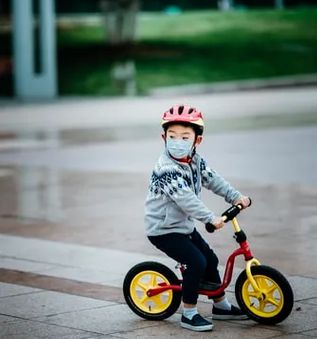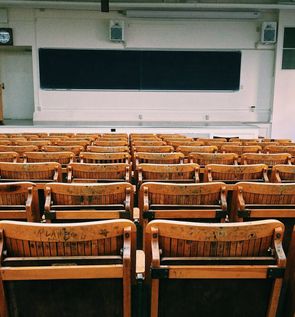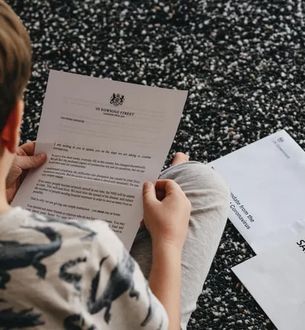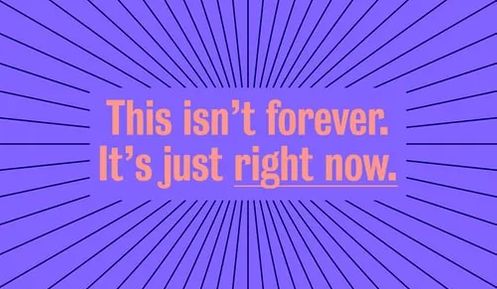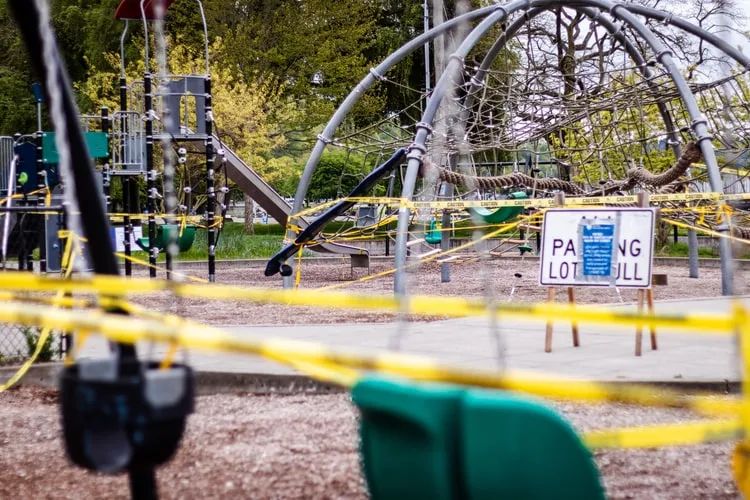
photo by Devon H via Unsplash
Generation COVID: From the eye of the storm, a new generation is born
May 15, 2020 | by Ira Bedzow and Ali Jackson-Jolley
In a hurricane, life is very different depending on which side of the eyewall you’re situated. Just outside the eye, life is fast and perilous. Here, nothing is clear, since the world is moving too fast – and in circles. On the other side of the wall, in the midst of the eye, there is respite from the chaos, an eerie sense of safety and quiet where nothing moves. The stillness of world makes it seem like life is holding its breath until the violence returns to dole out another thrashing.
In this time of the COVID-19 pandemic, we adults are at various distances outside the eye but nevertheless in the throes of the storm. With varying degrees of difficulty, we all are enduring this disorienting threat – one that affects our health, economic security, and our sense of normalcy. In a word, our world has been upended. Even the news cycle, which is somehow faster than it’s ever been, resembles gusts of wind, bellowing the same basic stories as it whips up feelings of impotence, frustration, and anxiety of an unknown future. Blasting our faces, burning our eyes and pushing us backwards.
Most children, however, do not share our experience. They see the world around them – they see us –from a very different vantage point. They sit in the eye of the storm. For them, life is unstable in a different way. It is not the frenetic energy of trying to keep everything together. It is the restless energy of not being able to be a kid. Their sense of loss in this moment relates to the missed opportunities that childhood used to bring – only a few months ago. No longer can they play outside with their friends, visit their extended family, look forward to prom, plan for summer vacation. For the moment, all is quiet. All they can do is sit, holding their breath, as they watch from a distance the chaos that surrounds them yet does not envelop them.
The disruption of stopping is greater than the disruption of moving at a different speed or pivoting in another direction. Think of it this way – when we run on a treadmill or play a game of pickup basketball, we can change our pace or move to an open spot on the court without really thinking too much. In continuous movement, we react in ways that keep us engaged. If, however, we get off that treadmill or take a break in the game, it is much harder to return to the pace we kept before. Starting to move again takes intention and effort.
This hiatus is hard for children. We should not minimize their experience or close our eyes to their pain. We should see how the pandemic is affecting them, knowing that the longer the interruption the harder it will be for them to pick up their pace again. However, maybe that is not such a bad thing. Maybe their necessary stepping off the college preparatory treadmill provides the needed time to consider whether they – or we – even want them to continue or if we all should switch our attention to something else.
Before the pandemic, social distancing was a by-product of spending too much time online. Now that it is intentional, we are beginning to see and understand the consequences of losing personal and physical connection to others. Before the pandemic, economic growth was taken for granted and social identity was a means for distinction. Now, we recognize the pitfalls of overly optimistic economic assumptions. And we see how emphasizing distinction rather than difference can tear a country apart at a time when unity (not homogeneity) is needed. Only a few months ago, food in America was a given, with obesity being a public health concern. Today, our ability to buy food is disrupted, either due to supply chains, market forces, or our fear of going to the supermarket.
As we desperately cling to a semblance of our former lives and our children sit watching us with nothing better to do, we all recognize that the pandemic razed the idols of our carefully curated lifestyle. Our former “see it, want it, buy it” mentality has been challenged by the realization that parents and children alike barely miss shopping malls, but desperately miss face-to-face human contact. We have forgotten to care about what our neighbors are wearing or driving, but we have remembered to care about how they are doing. It is not that we don’t miss our lives and disposable income, or that our values have changed. Rather, it is that what we used to think was essential is now recognized as being the luxury it always was.
We also can see how our values are being tested through our difficulty to act on them at these times.
Children learn how to act, speak, and live from their surroundings. They get their priorities and interests from copying the people they respect and love. They will learn how to live through their own hurricane-force affront by watching how well we push through ours, even if they don’t fully understand today what we are going through.
When the dust settles, we hope that all of us will have gained an appreciation for the things that can’t ever be bought – like family, friends and human connection. Money will no longer be seen as a means to buy us love. What we once perceived as the little things, like having dinner with grandparents, spending time in the company of friends—even riding on a school bus on a sunny day with the windows open— will become a moment of joy and a feeling that all is well with the world.
We hope that the generation of kids who were robbed of their over-programmed schedules but given endless hours of independent imaginative play will come to realize how valuable was the trade-off. We hope that the time alone serves to stop the rise of social loneliness and becomes a generational reboot for what it means to be comfortable in one’s own skin. This time in the eye should be a time for children to learn how to cultivate themselves and their own interests, so that they don’t have to rely on a curated world which targets them as consumers.
Hope alone does not cause any of these dreams to become reality. And many of us are just way too busy to move the railroad switch, enabling our kids’ life train to take another track. Many of us might not even have the energy to imagine another track is possible. But it is possible – we just have to have the will to see it.
Generations are defined by more than birth years; they are defined by moments. The COVID-19 pandemic is certainly a moment. Our hope is that the moment the COVID-19 pandemic serves is one that allows our children to question society’s goals and values so that we move forward and not backwards to how we once lived.

